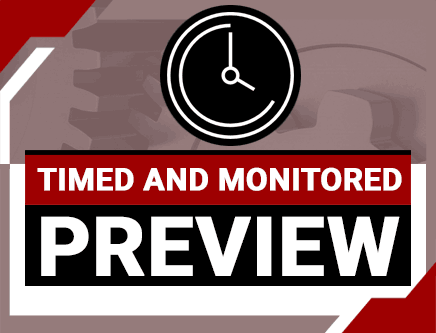Heat Tracing Systems (Ohio Timed & Monitored)
Credit: 3 PDH
Subject Matter Expert: A. Bhatia, Mechanical Engineer
In Heat Tracing Systems, you'll learn ...
- What is heat tracing and where it is used
- The different types of heat tracing systems – electric, steam, hot water
- The advantages and limitations of – constant watt, parallel circuit, self regulating and skin type heating
- Learn the control techniques – ambient air sensing or line control for optimum energy efficiency
Overview

To meet the Ohio Board's intent that online courses be "paced" by the provider, a timer will be used to record your study time. You will be unable to access the quiz until the required study time of 150 minutes has been met.
Credit: 3 PDH
Length: 46 pages
The term heat-tracing refers to the continuous or intermittent application of heating pipelines, tanks, vessels or other equipment used for storage or transportation of a product (liquid, powder or gas). The purpose of heat tracing is to compensate or make up for the heat loss to the surrounding atmosphere in low ambient temperature climates. Some applications for heat tracing include; preventing fluid from freezing, maintaining process fluids at pumpable viscosities, preventing formation of hydrates and waxes in hydrocarbon liquids (oil, etc) and also sometimes to preheat part of a fluid system prior to initial startup or after a primary heating system shutdown.
The heat tracing is generally accomplished by employing electric tracing, or steam tracing and insulating both the process fluid pipe and the tracer together, using appropriate insulation materials and metal lagging. The decision between electric and steam heat tracing depends on various factors and this 4 hour course outlines the pros and cons of both the methods.
This course is applicable to process, mechanical and electrical engineers, operations & maintenance personnel, as well as consultants and contractors who construct, build and manage facilities.
Specific Knowledge or Skill Obtained
This course teaches the following specific knowledge and skills:
- What is heat tracing and where it is used
- The different types of heat tracing systems – electric, steam, hot water
- The advantages and limitations of – constant watt, parallel circuit, self regulating and skin type heating
- Learn the control techniques – ambient air sensing or line control for optimum energy efficiency
- Understand the power supply, protection and safety devices
- The various codes and standards governing the design and installation of electric heat tracing
- The three types of steam heat tracing systems – external tube tracers, cemented tracers and fully jacketed pipe
- The do’s and don’ts of steam tracing
- The step-by-step approach for estimating the heat loss and selection of an electric heat tracing system
- The key factors affecting the selection of heat tracing systems
- the factors favoring and against the application of electric and steam heat tracing systems
Certificate of Completion
You will be able to immediately print a certificate of completion after passing a multiple-choice quiz consisting of 25 questions. PDH credits are not awarded until the course is completed and quiz is passed.
| This course is applicable to professional engineers in: | ||
| Alabama (P.E.) | Alaska (P.E.) | Arkansas (P.E.) |
| Delaware (P.E.) | District of Columbia (P.E.) | Florida (P.E. Area of Practice) |
| Georgia (P.E.) | Idaho (P.E.) | Illinois (P.E.) |
| Illinois (S.E.) | Indiana (P.E.) | Iowa (P.E.) |
| Kansas (P.E.) | Kentucky (P.E.) | Louisiana (P.E.) |
| Maine (P.E.) | Maryland (P.E.) | Michigan (P.E.) |
| Minnesota (P.E.) | Mississippi (P.E.) | Missouri (P.E.) |
| Montana (P.E.) | Nebraska (P.E.) | Nevada (P.E.) |
| New Hampshire (P.E.) | New Jersey (P.E.) | New Mexico (P.E.) |
| New York (P.E.) | North Carolina (P.E.) | North Dakota (P.E.) |
| Ohio (P.E. Timed & Monitored) | Oklahoma (P.E.) | Oregon (P.E.) |
| Pennsylvania (P.E.) | South Carolina (P.E.) | South Dakota (P.E.) |
| Tennessee (P.E.) | Texas (P.E.) | Utah (P.E.) |
| Vermont (P.E.) | Virginia (P.E.) | West Virginia (P.E.) |
| Wisconsin (P.E.) | Wyoming (P.E.) | |




